Catalan
The northeast of Spain is home to one of the country's most historic regions - Catalonia. Catalan nationals stand out from their Spanish counterparts in that they have a distinctive culture. Catalan survived in secret for thirty years during the Franco dictatorship, and whilst Barcelona is by far the region's largest city, we recommend exploring the rest of Catalonia to get to grips with this proud and individual culture.
Beautiful nature
There are many beautiful parts of Catalonia to explore, from the heights of the Pyrenees to the beautiful beaches on its east coast, it makes for the perfect family adventure. The beautiful town of Cadaqués sits on the very tip of Catalonia's east coast, and has been influenced throughout history by places such as Greece and Rome. You can while away the hours wandering through its Medieval old town and you'll find a contrast of Modernist-style buildings lining the seafront, some of which were influenced by Cuban architecture.
Girona
The city of Girona is a really easy drive from Barcelona and contains some incredibly interesting and unique sights. You'll find wonderful Romanesque and Gothic architecture, as well as one of the most well-preserved Jewish quarters in Catalonia, The Call. Venture down these narrow historic streets and be sure to visit the Museu d'Història dels Jueus, which gives a detailed look at the tumultuous history of the Jewish community in Spain.
North of Girona you'll find the town of Figueres, which is home to the incredible Teatre-Museu Dalí. Explore this astonishing building to discover a selection of the artist's work, and visit the famous Torre Galatea where Salvador Dalí spent the last years of his life.
Catalonia cuisine
One thing you'll notice when exploring Catalonia is the abundance of Botifarra (a type of sausage). There are more than a dozen different types of sausage in this region of Spain, so head to one of the many meat markets to sample them for yourself! The most common is Botifarra, which is a simple, thick sausage made of pork.
Another great dish to enjoy is Escudella i carn d'olla - a traditional Catalan stew. It contains large pilota meatballs and delicious fresh vegetables. Often you'll find that the stew contains pasta or rice, which makes it a really hearty dish. For those of you with a sweet tooth, we love Xuixos. These are a traditional sweet pastry stuffed with Crema Catalena (similar to crème brûlée), and are coated in sugar to create a tasty treat!
Basque
You'll find the Basque Country in the very south of France, stretching over the border into northern Spain, on the western part of the Pyrenees. With such beautiful cities as Bilbao, San Sebastian and Biarritz, the Basque region is home to a proud community with an individual and fascinating culture.
Lekeitio
Much of the Basque Country is well-travelled, and whilst the dazzling sights of San Sebastian are a delight, the town of Lekeitio is a charming example of Basque Country living. Just over 50 kilometres northeast of Bilbao, Lekeitio is visited by many as it was the birthplace of priest, poet and academic, Resurrección María de Azkue - an important figure in Basque history.
Lekeitio is home to two beautiful beaches that are overlooked by a mountain, and one of the main sights here is the Basilica of La Asunción de Santa María. This beautiful building is an example of the Late Basque Gothic style, and inside it holds a great selection of historical and religious artefacts.
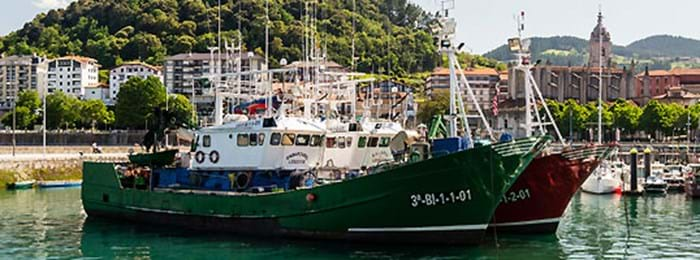
Lekeitio is a beautiful fishing town
French Basque
In the northern Basque Country, you'll find beautiful surroundings in the form of La Rhune mountain. Sitting right on the border of France and Spain, this mountain is an important site in Basque culture, as according to Basque mythology it was a meeting place for witches. Across the mountainside, you'll find Neolithic memorials and stone circles, so it makes for a fascinating hike.
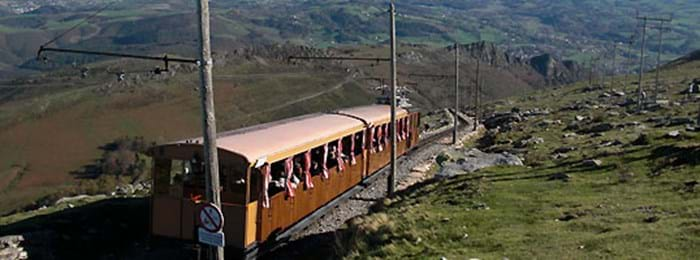
It's possible to take a small train up La Rhune mountain, which is great if you're travelling with kids!
The French Basque region is perhaps one of France's most underrated parts, but it has loads to offer for travellers. The two main towns here are Biarritz and Bayonne. Biarritz is a great place to visit with the family, as it has a total of six beautiful beaches. You'll find some world-class surfing schools here, and the aquariumis worth visiting, too. When visiting Bayonne, be sure to head to the Basque Museum, where you'll find a vast exhibition covering the customs and history of the Basque people.
Basque Cuisine
Within Basque cuisine, there exists an interesting contrast between the food sourced from the surrounding oceans, which is enjoyed in the coastal towns and cities, and the meats, freshwater fish and vegetables that dominate Basque cuisine further inland. This means that you'll experience a variety of food when travelling the Basque Country.
Gâteau Basque is a beautiful pastry dessert from the French Basque country. Underneath a crisp outer layer, you'll enjoy a soft almond sponge. Typically there are two fillings, one almond cream and the other a cherry conserve. A dessert of contrasts, we love this gâteau!
One thing we love about Spanish cuisine is tapas. For the Basque alternative, be sure to try pincho on your travels. These Basque-style tapas can be enjoyed as a bar snack in a Basque tavern, and are great when you're with the family or a group of friends. Toppings (often seafood, such as prawns) are layered on top of bread and secured in place with a toothpick. Delicious!
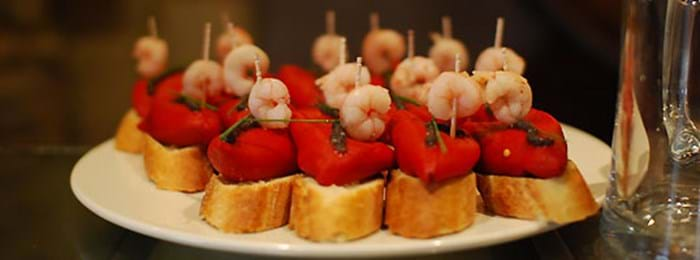
Pinchos are a delicious tapas-style dish found in the Basque Country
Flemish
Flanders is home to the Flemish community, and is rich with hundreds of years of art and culture. Due to various influences throughout history, including German and Anglo-Saxon, Flemish people are very open-minded to other cultures. This is apparent when you view the fact that most Flemings speak at least one or two other languages, so you won't be stuck when travelling around!
Great Museums
One way to explore a new culture is to check out the best museums and galleries in the area. Flanders is home to some of Europe's finest art, and you can see some incredible modern works of art at the M-Museum, in Leuven. If you're into design, head to Ghent's Design Museum, which houses examples of 17th and 18th century Flemish design, as well as more contemporary pieces. Antwerp's Middelheim Museum is a great outdoor space dotted with beautiful sculptures - great for a sunny day.
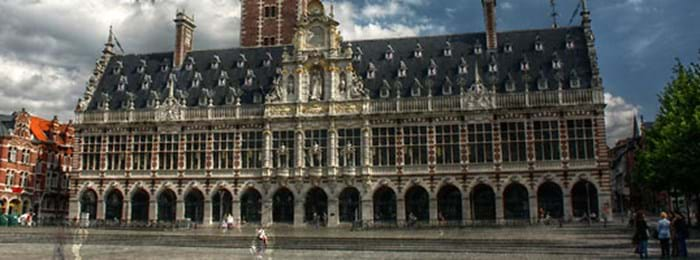
Explore Leuven and its historic old centre
History
Flanders Fields are great to explore by car, and you'll find a number of monuments throughout Flanders to commemorate the soldiers lost during WWI. Head to Ypres to see the In Flanders Fields Museum, to learn more. Nearby the city of Diksmuide you'll find some of the last remaining trenches, from the end of the war. Although these make for a sombre activity, they serve as a great educational trip for the whole family.
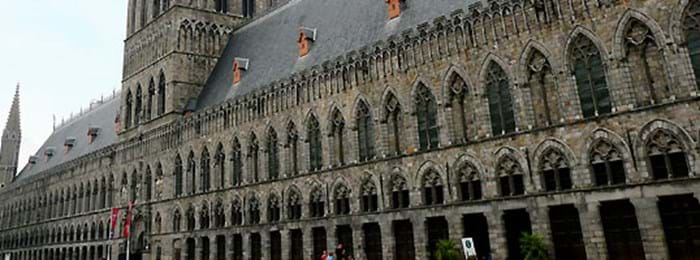
The Gothic Cloth Hall in Ypres is home to the In Flanders Fields Museum
Nature
Flanders is a beautiful region of Belgium, and you're spoilt for choice when it comes to a picnic spot! Check out the stunning botanical gardens in Meise, which is just three kilometres from the famous Atomium monument. One great place for kids is De Averegten Provincial Domain, a wooded area southeast of Antwerp, with farm animals, floral gardens, a playground and some fun nature education activities.
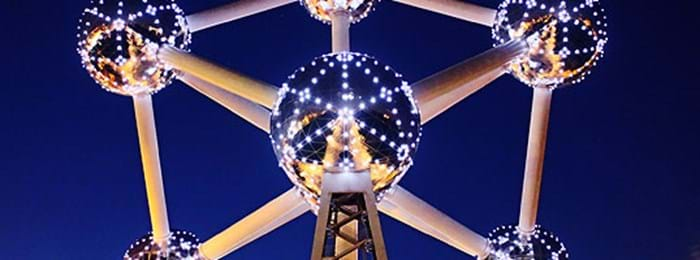
The Atomium Monument in Brussels attracts tourists from the world over
Food
There's more to enjoy in Flemish cuisine than waffles and Belgian chocolate! Enjoy fries with delicious fresh mussels, or alongside a hearty Flemish beef stew (beef cooked in beer). One of our favourite Flemish dishes has to be Stoemp. This dish can be found all over the country, but particularly in Brussels, and contains pureed potatoes, mashed vegetables, bacon and sausages. Delicious!
Another food you'll find in Flanders is endives. These tangy vegetables are a staple in any Flemish diet, and we love them wrapped in ham, covered in a creamy cheese sauce and baked in the oven.
Getting there and around
You can explore Europe so easily with Eurotunnel Le Shuttle, which takes you from Folkestone to Calais in just 35 minutes. Explore Europe's hidden cultures today!
Book your journey